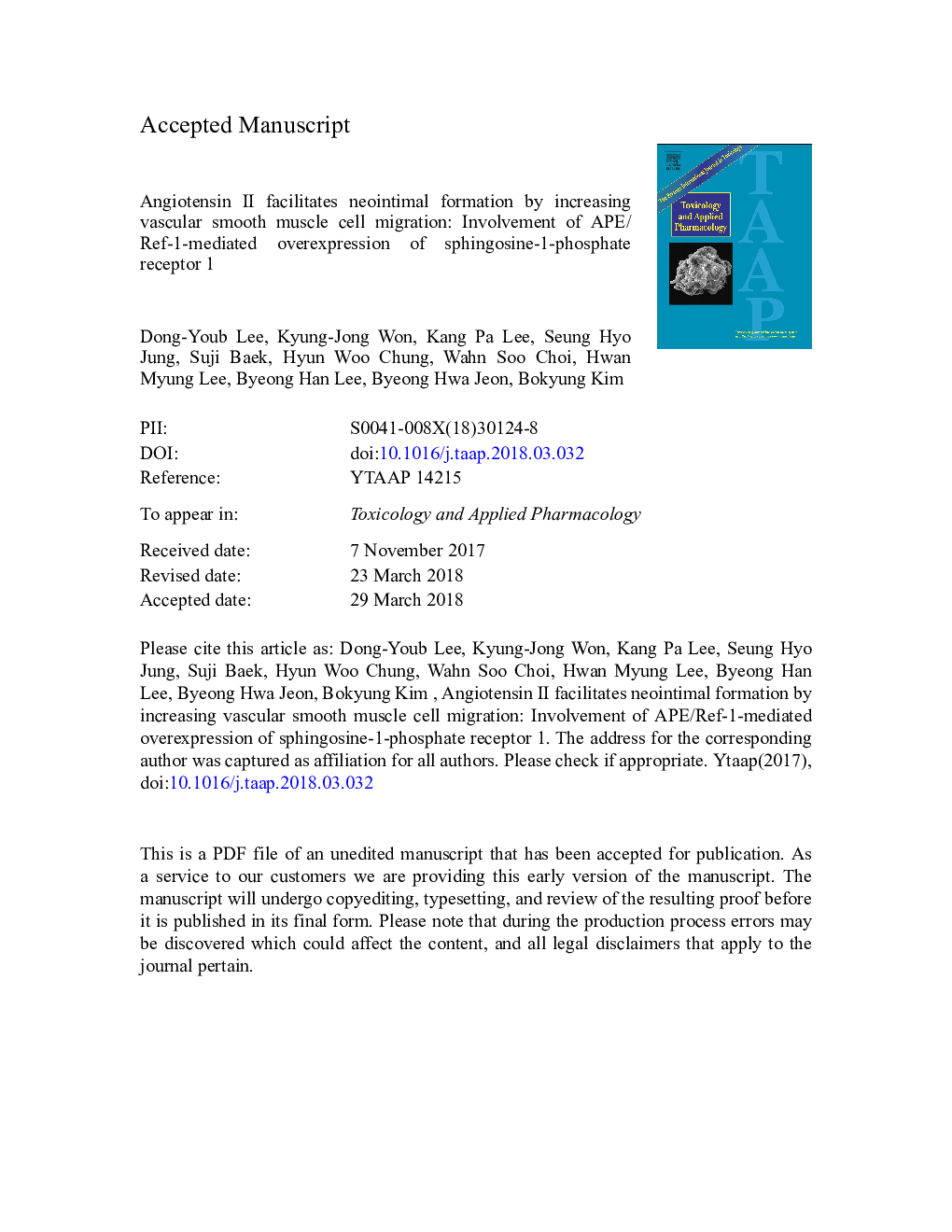| Article ID | Journal | Published Year | Pages | File Type |
|---|---|---|---|---|
| 8538602 | Toxicology and Applied Pharmacology | 2018 | 35 Pages |
Abstract
Angiotensin II (Ang II) is implicated in the development of cardiovascular disorders including hypertension and atherosclerosis. However, the role of Ang II in the interaction between apurinic/apyrimidinic endonuclease/redox factor-1 (APE/Ref-1) and sphingosine-1-phosphate (S1P) signals in relation to vascular disorders remains to be clarified. This study aimed to determine whether APE/Ref-1 plays a role in epigenetic regulation of the S1P receptor (S1PR) in response to Ang II in vascular smooth muscle cell (VSMC) migration and vascular neointima formation. Ang II augmented the expression of S1PR1 in aortic smooth muscle cells of Sprague Dawley rats (RASMCs), which was attenuated by Ang II receptor (AT) 1 inhibitors, antioxidants, and APE/Ref-1 knockdown with small interference RNA. Ang II stimulation produced H2O2, and exogenous H2O2 elevated S1PR1 expression in RASMCs. Moreover, Ang II caused translocation of cytoplasmic APE/Ref-1 into the nucleus in RASMCs. H3 histone acetylation and APE/Ref-1 binding at the S1PR1 promoter were increased in RASMCs treated with Ang II. In addition, Ang II induced migration in RASMCs, which was suppressed by AT1 and S1PR1 inhibitors. The expression of S1PR1, and colocalization of APE/Ref-1 and acetylated histone H3 in vascular neointima, were greater in Ang II-infused rats compared with a control group. These findings demonstrate that Ang II stimulates the epigenetic regulation of S1PR1 expression via H2O2-mediated APE/Ref-1 translocation, which may consequently be involved in Ang II-induced VSMC migration and vascular neointima formation. Therefore, APE/Ref-1-mediated overexpression of S1PR1 may be implicated in the vascular dysfunction evoked by Ang II.
Keywords
RASMCsSDSAng II receptorAPE/Ref-1Vascular smooth muscle cell (VSMC)SBPS1PRVSMCPDGFS1PDCF-DAHDACH&EMAPKSmall interfering RNAROSsiRNAAngiotensin IISprague DawleySphingosine-1-phosphatechromatin immunoprecipitationAng IIsodium dodecyl sulfateVascular smooth muscle cellRat aortic smooth muscle cellsVascular endothelial growth factorVascular Endothelial Growth Factor (VEGF)platelet-derived growth factorsystolic blood pressureHematoxylin and EosinHistone acetyltransferasehistone deacetylasemitogen-activated protein kinaseCHiPHATReactive oxygen speciesS1P receptor
Related Topics
Life Sciences
Environmental Science
Health, Toxicology and Mutagenesis
Authors
Dong-Youb Lee, Kyung-Jong Won, Kang Pa Lee, Seung Hyo Jung, Suji Baek, Hyun Woo Chung, Wahn Soo Choi, Hwan Myung Lee, Byeong Han Lee, Byeong Hwa Jeon, Bokyung Kim,
